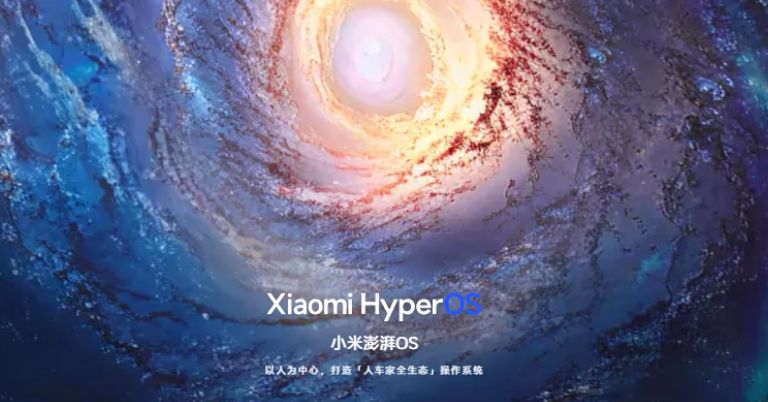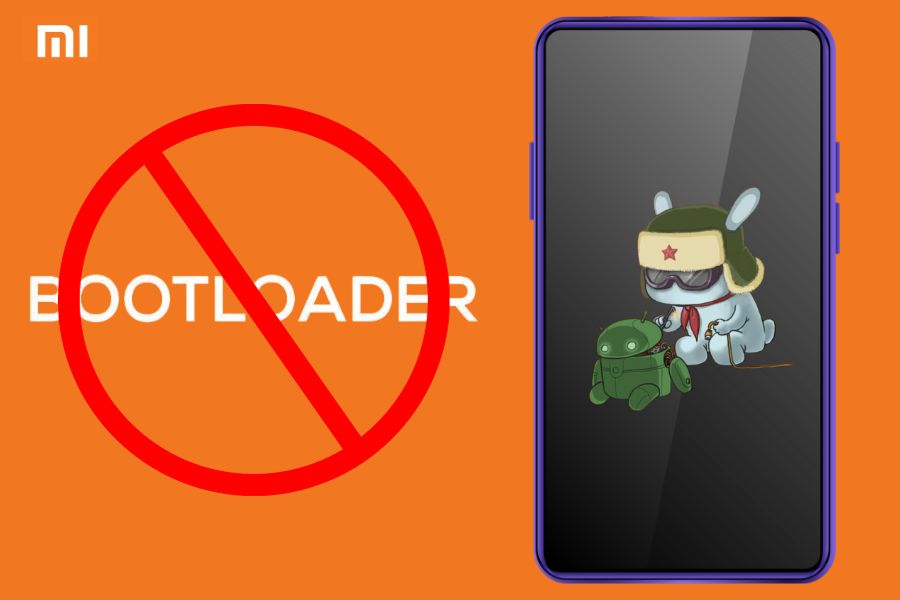
Xiaomi’s homegrown has been the talk of the tech world for one reason or another. They have just revealed their HyperOS rollout plan for the second quarter of 2024. This article dives into the greater details of HyperOS including the list of devices that have received the software so far.
Xiaomi HyperOS Overview
For well over 13 years, MIUI has been there for Xiaomi smartphones. After multiple rounds of rumours, Xiaomi launched the HyperOS and is slowly replacing the MIUI with it across all its brands. The company has enrolled its homegrown OS on over 80 pre-existing devices. In the meantime, they have started shipping their latest devices with the HyperOS. Before all that, let’s take a look at…
What is Xiaomi HyperOS?
The Xiamoi HyperOS is a new operating system with a combination of an advanced Android base and Xiaomi’s self-developed IoT (Internet of Things) platform — Vela. The company introduced this proprietary platform a few years ago, aiming to provide support for a wide range of smart devices, including smartwatches, speakers, home appliances, and even sensors.

As such, the HyperOS is here to support Xiaomi’s wide range of products spanning over 200 different categories. Regarding the ubiquity of their new OS, Xiaomi’s CEO — Lei Jun says that this new OS will take them closer to realizing their milestone of a “full ecology for people, cars, and homes”. Looking at the recent developments, it appears that HyperOS is walking in the footsteps of Hauwei’s HarmonyOS.
- You may also like:
What’s new though?
Upon questioning whether it is a case of simple rebranding, Xiaomi officials clarified that HyperOS is written in a completely new architecture. Likewise, it is unclear if Xiaomi HyperOS will follow the annual Android version upgrade to keep the software up-to-date, like OxygenOS, One UI, or Funtouch OS.
Whatever it might be, Xiaomi claims that the devices running on their OS can perform tasks faster than Android’s native kernel. Furthermore, the HyperOS has streamlined phone firmware, i.e. the smallest in the industry at just 8.75 GB. It also supports over 200 processor platforms while boasting minimal performance degradation over 50 months. Lastly, the Xiaomi HyperOS also improves the latency of WLAN while allowing multiple devices to network dynamically in real-time, and work together as a whole.

No more custom ROMs — Is Xiaomi forgetting its roots?
Xiaomi phones have been widely regarded as one of the most customisable devices with easier access to the bootloader allowing for custom ROM installation, and advanced user operations. However, it appears Xiaomi is considering tightening the access to the bootloader.
These rumours are based on the recently surfaced hidden “Bootloader Unlock Beta” option in Xiaomi Community China. Furthermore, unlocking the bootloader is turned off by default in the recently launched Xiaomi 14 series. We do not exactly know why Xiaomi is doing this. However, they previously cited security, data protection, and user experience as reasons for these measures. In addition, Xiaomi also said that users who unlocked their bootloader will not receive Xiaomi HyperOS updates. You can, however, regain updates by relocking your phone.

Despite all the tightening measures, the bootloader isn’t totally inaccessible — just difficult. Users will have to request permission through Xiaomi’s community forum to unlock the bootloader. Similarly, there are additional China-specific restrictions such as reaching “level five” on Xiaomi community forums, time-sensitive unlock permissions, and limiting bootloader access to three devices in a year. It is unsure if these restrictions will be placed on HyperOS-powered Xiaomi devices in the rest of the world.
Xiaomi HyperOS Availability
The HyperOS debuted with the Xiaomi 14 series in China at the time. Xiaomi intends to replace the MIUI completely with the HyperOS in the coming days. The company has already rolled out its homegrown software to a bunch of their devices. The following were the first devices that received the HyperOS:
The list of the second batch that will get the HyperOS updates:
Xiaomi
Redmi
-
- Redmi K60E
- Redmi K50 Ultra
- Redmi K50 Gaming
- Redmi K50 Pro
- Redmi K50
- Redmi K40S
- Redmi K40 Gaming
- Redmi K40 Pro+
- Redmi K40 Pro
- Redmi K40
- Redmi Note 13 Pro+ 5G
- Redmi Note 13 Pro 5G
- Redmi Note 13 5G
- Redmi Note 13R Pro
- Redmi Note 13R 5G
- Redmi Note 12 Turbo
- Redmi Note 12T Pro
- Redmi Note 12 Pro Speed Edition
- Redmi Note 12 Pro+ 5G
- Redmi Note 12 Pro 5G
- Redmi Note 12 5G
- Redmi Note 12R Pro
- Redmi Note 12R 5G
- Redmi Note 12R
- Redmi 12 5G
- Redmi Note 11T Pro
- Redmi Note 11 Pro
- Redmi Note 11T Pro+
- Redmi Note 11 Pro+
- Redmi Note 11 5G
- Redmi Note 11R
- Redmi Note 11E Pro
- Redmi Note 11E
- Redmi 12C
Tablet
-
- Xiaomi Pad 5 Pro 12.4
- Xiaomi Pad 5 Pro SG
- Xiaomi Pad 5 Pro
- Xiaomi Pad 5
- Redmi Pad SE
- Redmi Pad
Once again, the company recently released their software roll-out plan for the second quarter of 2024:
-
- Xiaomi 11 Ultra
- Xiaomi 11T Pro
- Mi 11X
- Xiaomi 11i HyperCharge
- Xiaomi 11 Lite
- Xiaomi 11i
- Mi 10
- Xiaomi Pad 5
- Redmi K50i
- Redmi 13C series
- Redmi 12
- Redmi 11 Prime 5G
- Redmi Note 11 Series
- Meanwhile, check out our video of Xiaomi Pad 6.
















![Best Ultrabooks To Buy in Nepal 2024 [Updated] Best Ultrabook Laptops in Nepal 2023 - June Update](https://cdn.gadgetbytenepal.com/wp-content/uploads/2023/04/Best-Ultrabook-Laptops-in-Nepal-2023-June-Update.jpg)
![Best Gaming Laptops in Nepal 2024 [Updated] Best Gaming Laptops in Nepal 2023 - June Update](https://cdn.gadgetbytenepal.com/wp-content/uploads/2023/04/Best-Gaming-Laptops-in-Nepal-2023-June-Update.jpg)


![Best Mobile Phones Under Rs. 15,000 in Nepal [Updated] Best Phones Under 15000 in Nepal 2024 Budget Smartphones Cheap Affordable](https://cdn.gadgetbytenepal.com/wp-content/uploads/2024/03/Best-Phones-Under-15000-in-Nepal-2024.jpg)
![Best Mobile Phones Under Rs. 20,000 in Nepal [Updated] Best Mobile Phones Under NPR 20000 in Nepal 2023 Updated Samsung Xiaomi Redmi POCO Realme Narzo Benco](https://cdn.gadgetbytenepal.com/wp-content/uploads/2024/01/Best-Phones-Under-20000-in-Nepal-2024.jpg)
![Best Mobile Phones Under Rs. 30,000 in Nepal [Updated]](https://cdn.gadgetbytenepal.com/wp-content/uploads/2023/12/Best-Phones-Under-30000-in-Nepal-2024.jpg)
![Best Mobile Phones Under Rs. 40,000 in Nepal [Updated] Best Phones Under 40000 in Nepal 2024 Smartphones Mobile Midrange](https://cdn.gadgetbytenepal.com/wp-content/uploads/2024/02/Best-Phones-Under-40000-in-Nepal-2024.jpg)
![Best Mobile Phones Under Rs. 50,000 in Nepal [Updated] Best Phones Under 50000 in Nepal 2024 Smartphones Midrange](https://cdn.gadgetbytenepal.com/wp-content/uploads/2024/02/Best-Phones-Under-50000-in-Nepal-2024.jpg)
![Best Flagship Smartphones To Buy In Nepal [Updated] Best Smartphones in Nepal 2024 Flagship Premium Samsung Apple iPhone Xiaomi OnePlus Honor](https://cdn.gadgetbytenepal.com/wp-content/uploads/2023/09/Best-Smartphones-in-Nepal-2024.jpg)